Rob Bignell's Blog, page 326
August 7, 2014
How to determine your ebook’s price
Among 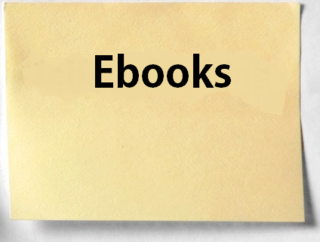 the big decisions you’ll make when publishing your ebook (and your paperback, for that matter) is what price to charge. If priced too high, you’ll decrease your sales to zero. If priced too low, you’ll miss out on revenue.
the big decisions you’ll make when publishing your ebook (and your paperback, for that matter) is what price to charge. If priced too high, you’ll decrease your sales to zero. If priced too low, you’ll miss out on revenue.
Before examining what factors to consider in determining your ebook’s price, recognize that readers expect to pay less for an ebook than they do for a paperback. After all, the paperback requires trees, ink, printing presses, and labor to produce and send it; an ebook doesn’t (Well, the labor largely is limited to a few compter and software techs.). Paperbacks that I charge $10 for go for $2 as an ebook. As of this writing, most ebook prices average 99 cents to $2.99.
Your ebook’s price also will in part be bounded by whichever print on demand company you go with. Most set a minimum price to cover their overhead and to make a tidy profit. For example, currently Kindle DP won’t let you sell a book below 99 cents unless you enroll it in special programs the company offers.
Once you know the minimum price you can charge, determine your costs by considering these factors:
g Competition’s prices – Identify the prices of a dozen books very similar to yours in topic and file size that are available for sale at Amazon.com. Making a chart listing the title/file size/price is useful. Now fit your book into that chart for file size and undercut the competition’s listed price. That is, if your book is 275 KB and the other books at or above that file length sell for $1.99, set the price at $1.89.
g Set your goals – Is your goal to establish yourself as an author or have you already done so? If the former, then keep your price low, even though that means your royalty payments will be less in the short run. That’s because low prices help generate sales that pushes your ebook higher into Amazon.com’s rankings, which in turn will generate more sales. If you’re already established, you can go for a higher price and hence higher percentage of royalties (At Kindle DP, ebooks set above $2.99 garner 70% royalties while those below that price earn 35% royalties.) knowing that a built-in audience is willing to pay for your books.
g Ensure a profit and respectability – Don’t reduce your price to the point where you earn mere pennies for your ebook. You must keep your book somewhat above the minimum price that your print on demand provider requires. Hence, if the minimum price of your book is 99 cents, don’t charge a dollar for it. You’d have to sell a hundred books to make a mere dollar. And those 100 sales will be tough as many readers will wonder if your book is of questionable quality as it is priced so low.
Need an editor? Having your book, business document or academic paper proofread or edited before submitting it can prove invaluable. In an economic climate where you face heavy competition, your writing needs a second eye to give you the edge. Whether you come from a big city like San Francisco, California, or a small town like Nimrod, Oregon, I can provide that second eye.
Related articles
 Place hyperlinks in your nonfiction ebook
Place hyperlinks in your nonfiction ebook How to determine your book's price
How to determine your book's price Aim to simultaneously publish paperback, ebook
Aim to simultaneously publish paperback, ebook How to determine your ebook's price
How to determine your ebook's price
August 6, 2014
How to properly punctuate dialogue
Dialogue 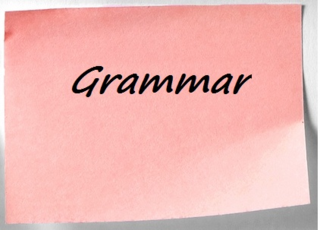 is vital in most fiction as it conveys characters’ motivations and provides information the reader must know to move along the story. Getting the punctuation of dialogue right then is of the utmost importance. Afterall, a misplaced or forgotten quotation mark can confuse readers about what is said and who said it.
is vital in most fiction as it conveys characters’ motivations and provides information the reader must know to move along the story. Getting the punctuation of dialogue right then is of the utmost importance. Afterall, a misplaced or forgotten quotation mark can confuse readers about what is said and who said it.
When punctuating dialogue, follow these basic rules:
Place a quotation mark before what is spoken.
“Hello, Johnson residence.
Place quotation mark at end of what is spoken.
“Hello, Johnson residence.”
If telling who is speaking (aka attribution) after a spoken line of dialogue, use a comma before the closing quotation mark.
“Hello, Johnson residence,” Mary said.
Then lowercase the first word after the closing quotation mark (unless it’s a proper noun).
“Hello, Johnson residence,” said Mary.
If a question mark or an exclamation mark appears at the end of what’s spoken, there's no need for the comma.
“Hello, Johnson residence; who is this please?” said Mary.
If the character continues to speak, keep the dialogue in the same paragraph and use a new quotation mark.
“Hello, Johnson residence,” said Mary. “How many I help you?
…And close it up with a quotation mark.
“Hello, Johnson residence,” said Mary. “How many I help you?”
Need an editor? Having your book, business document or academic paper proofread or edited before submitting it can prove invaluable. In an economic climate where you face heavy competition, your writing needs a second eye to give you the edge. Whether you come from a big city like Arlington, Texas, or a small town like Chicken, Alaska, I can provide that second eye.
<A HREF="http://ws-na.amazon-adsystem.com/widg... Widgets</A>
Related articles
 Easy to understand comma rules
Easy to understand comma rules Mastering the fine art of dialogue punctuation
Mastering the fine art of dialogue punctuation Place commas inside quotation marks
Place commas inside quotation marks
August 5, 2014
Editing client publishes first novel, ‘Pushing Past’
A recent  editing client of mine from the Minneapolis area, Catie Shae, has published her first novel. “Pushing Past” tells the tale of young and beautiful, Charlee Tyler, a girl trapped in a woman’s body. With her past never being history and her future always lurking, she learned to be a follower and comes to believe that decisions made for her are so much easier than those she makes for herself. But with the help of her best friend and a certain somebody she never expected to see again, Charlee overcomes her dark past and develops a new life she had never thought possible – a life that might actually be worth living. “Pushing Past” is available for purchase online.
editing client of mine from the Minneapolis area, Catie Shae, has published her first novel. “Pushing Past” tells the tale of young and beautiful, Charlee Tyler, a girl trapped in a woman’s body. With her past never being history and her future always lurking, she learned to be a follower and comes to believe that decisions made for her are so much easier than those she makes for herself. But with the help of her best friend and a certain somebody she never expected to see again, Charlee overcomes her dark past and develops a new life she had never thought possible – a life that might actually be worth living. “Pushing Past” is available for purchase online.
Need an editor? Having your book, business document or academic paper proofread or edited before submitting it can prove invaluable. In an economic climate where you face heavy competition, your writing needs a second eye to give you the edge. Whether you come from a big city like New York, New York, or a small town like Bantam, Connecticut, I can provide that second eye.
<A HREF="http://ws-na.amazon-adsystem.com/widg... Widgets</A>Related articles
 Editing client, Ed Wyns, publishes first novel
Editing client, Ed Wyns, publishes first novel Editing client releases quest novel sequel
Editing client releases quest novel sequel Editing client releases first novel in four-part saga
Editing client releases first novel in four-part saga Editing client releases first book, 'Made This Way'
Editing client releases first book, 'Made This Way' Marketing Tip: Update your email signature
Marketing Tip: Update your email signature
August 4, 2014
Avoid white room syndrome when writing
Establishing the 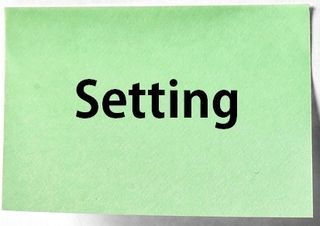 setting at the beginning of a story is no easy task. Imagining a world – especially one for the science fiction and fantasy genres – involves thinking about every aspect of its sights, sounds, scents and even tastes and feel.
setting at the beginning of a story is no easy task. Imagining a world – especially one for the science fiction and fantasy genres – involves thinking about every aspect of its sights, sounds, scents and even tastes and feel.
Rather than fully imagine such a world, some writers instead create a quick, unformed facsimile of their own. For example, they start the story with the line, “She awoke in a white room.” The white room is the white piece of paper facing the author. This is known as white room syndrome, a term coined a few year ago at the Turkey City Workshop in Austin (a group that has included authors William Gibson, Bruce Sterling, Lewis Shiner, Rudy Rucker and Walter Jon Williams).
They officially define white room syndrome as “an authorial imagination inadequate to the situation at end, most common at the beginning of a story.” In short, because the world wasn’t fully imagined, it can’t support the story that unfolds from it.
Sometimes this occurs because a writers’ inspiration for the story is from a setting in which he found himself. If the writer takes some extra time to think about and develop this world, however, such inspiration can be put to good effect. This is the case in the short story “The Yellow Wallpaper,” by Charlotte Perkins Gilman.
White room syndrome also can occur because some writers believe that they should simply start writing and let the world evolve from there, à la the Beat writers’ approach. Sometimes this technique does work, but all too often the writers misses the full potential of this kernel of a setting that is planted in the opening line. Even worse, the writer creates an inconsistent setting because he haphazardly creates a new world.
The lesson here: Think a lot about and fully develop your setting before committing to it.
Need an editor? Having your book, business document or academic paper proofread or edited before submitting it can prove invaluable. In an economic climate where you face heavy competition, your writing needs a second eye to give you the edge. Whether you come from a big city like St. Louis, Missouri, or a small town like Cheesequake, New Jersey, I can provide that second eye.
<A HREF="http://ws-na.amazon-adsystem.com/widg... Widgets</A>Related articles
 Avoid using weak pushbutton words in story
Avoid using weak pushbutton words in story Avoid card tricks in the dark when writing
Avoid card tricks in the dark when writing Deliver an eyeball kick for effective writing
Deliver an eyeball kick for effective writing Avoid 'As you know' Syndrome in fiction
Avoid 'As you know' Syndrome in fiction
August 3, 2014
Five Great Quotations about Revising
“My own  experience is that once a story has been written, one has to cross out the beginning and the end. It is there that we authors do most of our lying.” - Anton Chekhov
experience is that once a story has been written, one has to cross out the beginning and the end. It is there that we authors do most of our lying.” - Anton Chekhov
“I have written - often several times - every word I have ever published.” - Vladimir Nabokov
“The writer who cannot sometimes throw away a thought about which another man would have written dissertations, without worry whether or not the reader will find it, will never become a great writer.” - Georg Christoph Lichtenberg
“It is my contention that a really great novel is made with a knife and not a pen. A novelist must have the intestinal fortitude to cut out even the most brilliant passage so long as it doesn't advance the story.” - Frank Yerby
“Cut out all these exclamation points. An exclamation point is like laughing at your own joke.” - F. Scott Fitzgerald
Need an editor? Having your book, business document or academic paper proofread or edited before submitting it can prove invaluable. In an economic climate where you face heavy competition, your writing needs a second eye to give you the edge. Whether you reside in a big city like Tampa or a small town like Calypso, North Carolina, I can provide that second eye.
<A HREF="http://ws-na.amazon-adsystem.com/widg... Widgets</A>Related articles
 Five great quotations for aspiring writers
Five great quotations for aspiring writers Five Great Quotations about Editing
Five Great Quotations about Editing Five great quotations about writer's block
Five great quotations about writer's block Five Great Quotations for Aspiring Writers
Five Great Quotations for Aspiring Writers
August 2, 2014
Use confidant to reveal hero's inner turmoil
Sometimes to 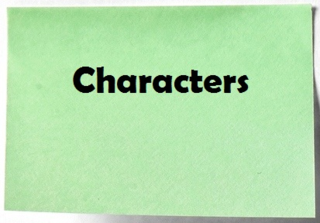 reveal the protagonist’s inner conflict, he shares his thoughts with another character. This character who the protagonist trusts is referred to as a confidant (or a confidante if a female).
reveal the protagonist’s inner conflict, he shares his thoughts with another character. This character who the protagonist trusts is referred to as a confidant (or a confidante if a female).
A confidant often is someone who shares a special relationship with the protagonist – a brother, an old friend, a doctor, a parental figure. Some famous confidants include: Sam Gamgee for Frodo Baggins in “The Lord of the Rings”; Maria Temple for Jane Eyre; and Dr. McCoy for Captain Kirk in “Star Trek: The Original Series.”
When speaking with a confidant, the protagonist might reveal his:
g State of mind
g Intentions
g Secrets
g Personal problems
g Character flaws
g Feelings
g Personal fears
What is revealed ought to be key to moving the plot forward. Generally, if the inner conflict doesn’t inhibit the protagonist from resolving the story’s central problem, then it serves little purpose.
In addition, the confidant ought to be more than a wall that is spoken to. The confidante should provide support, insight into what he is told, play devil’s advocate, or perform some other function that helps shape the protagonist’s decision and hence helps move the plot forward.
Need an editor? Having your book, business document or academic paper proofread or edited before submitting it can prove invaluable. In an economic climate where you face heavy competition, your writing needs a second eye to give you the edge. I can provide that second eye.
<A HREF="http://ws-na.amazon-adsystem.com/widg... Widgets</A>
Related articles
 Story more profound with man vs. himself conflict
Story more profound with man vs. himself conflict Make story interesting by establishing stakes
Make story interesting by establishing stakes
August 1, 2014
Hold contest to get more reviews of your book
Once you’ve 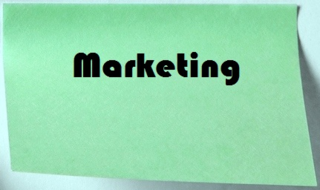 published a book, one way to generate sales is to obtain positive book reviews on sites like Amazon.com and Goodreads. Not just any review will do, however. You want reviews that are meaningful, written by people who actually read and were interested in your book (Usually readers can tell when a reviewer isn’t genuine.). You also want a lot of reviews, for the more they are, the more likely they are to generate sales.
published a book, one way to generate sales is to obtain positive book reviews on sites like Amazon.com and Goodreads. Not just any review will do, however. You want reviews that are meaningful, written by people who actually read and were interested in your book (Usually readers can tell when a reviewer isn’t genuine.). You also want a lot of reviews, for the more they are, the more likely they are to generate sales.
One to generate those reviews is to hold a contest.
A currently trendy contest among self-published authors – probably gaining traction because of sites like Story Cartel – enters readers who write a review of your book into a drawing for a free ereader (typically a Kindle). Readers can download your book either for free from a specific site or must make a verified purchased of the book before their review qualifies them as an entrant.
To make this contest work, you'll need to do some promotional work. Start by posting a blog entry a about the contest a couple of days before it begins and then send links to the entry via your social media platforms, such as Twitter, Google+, Facebook, LinkedIn, Pinterest and so on.
Some authors have reported up to a hundred reviews added to their sites via this effort. Of course, the downside is that some reviews – because they are honest – may be negative (But that also can be a good thing!).
Need an editor? Having your book, business document or academic paper proofread or edited before submitting it can prove invaluable. In an economic climate where you face heavy competition, your writing needs a second eye to give you the edge. Whether you come from a big city like San Jose, California, or a small town like Boar Tush, Alabama, I can provide that second eye.
Amazon.com Widgets
July 31, 2014
Editing client publishes novel about basic training
A long-time 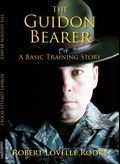 editing client of mine, Robert Lovelle Rooks, has published his fifth book, “The Guidon Bearer.” The book is a journey through Air Force basic training circa Year 2000 that many Air Force veterans will find familiar, other service-members will be able to relate to, and everyone will find entertaining and informative. Indeed, all veterans have their stories, all veterans have their experiences, but one thing is for sure: They’ll all remember basic training. The book is available online.
editing client of mine, Robert Lovelle Rooks, has published his fifth book, “The Guidon Bearer.” The book is a journey through Air Force basic training circa Year 2000 that many Air Force veterans will find familiar, other service-members will be able to relate to, and everyone will find entertaining and informative. Indeed, all veterans have their stories, all veterans have their experiences, but one thing is for sure: They’ll all remember basic training. The book is available online.
Need an editor? Having your book, business document or academic paper proofread or edited before submitting it can prove invaluable. In an economic climate where you face heavy competition, your writing needs a second eye to give you the edge. Whether you come from a big city like Denver, Colorado, or a small town like Dewey Beach, Delaware, I can provide that second eye.
<A HREF="http://ws-na.amazon-adsystem.com/widg... Widgets</A>Related articles
 Editing client, Ed Wyns, publishes first novel
Editing client, Ed Wyns, publishes first novel Editing client releases quest novel sequel
Editing client releases quest novel sequel Editing client releases first book, 'Made This Way'
Editing client releases first book, 'Made This Way' Three potential ways to end your story
Three potential ways to end your story
July 30, 2014
Take the road right: Traveled vs. travelled
When deciding 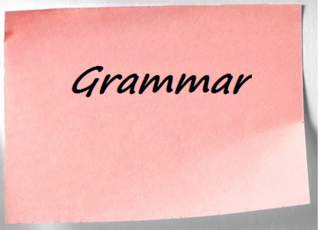 which spelling of these two words to use, always travel light if in America.
which spelling of these two words to use, always travel light if in America.
American English uses one l when spelling traveling, traveled, etc.: “The president traveled to China.”
British English uses two l’s, as in travelling, travelled, etc.: “The queen travelled to India.”
Need an editor? Having your book, business document or academic paper proofread or edited before submitting it can prove invaluable. In an economic climate where you face heavy competition, your writing needs a second eye to give you the edge. Whether you come from a big city like Dallas, Texas, or if you come from a small town Why, Arizona, I can provide that second eye.
<A HREF="http://ws-na.amazon-adsystem.com/widg... Widgets</A>
Related articles
 Two l's or not two l's: Canceled vs. cancelled
Two l's or not two l's: Canceled vs. cancelled Heart of the matter: Core vs. corps
Heart of the matter: Core vs. corps When to use affect vs. effect
When to use affect vs. effect How to get rid of Word's proofreading marks
How to get rid of Word's proofreading marks
July 29, 2014
Editing client publishes Irish ghost novel
A recent 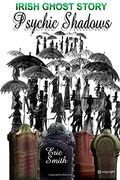 editing client of mine, Eric Smith, has published his first book, “Psychic Shadows.” Set in Dublin, Ireland, the novella tells the tale of Laura O’Kelly, a single mum who wins the Home lottery. When Laura, her boyfriend, and her daughter move into the house – the same house where a family was murdered in 1880 – they experience a night of terror and horror…with a twist. The book is available online.
editing client of mine, Eric Smith, has published his first book, “Psychic Shadows.” Set in Dublin, Ireland, the novella tells the tale of Laura O’Kelly, a single mum who wins the Home lottery. When Laura, her boyfriend, and her daughter move into the house – the same house where a family was murdered in 1880 – they experience a night of terror and horror…with a twist. The book is available online.
Need an editor? Having your book, business document or academic paper proofread or edited before submitting it can prove invaluable. In an economic climate where you face heavy competition, your writing needs a second eye to give you the edge. Whether you come from a big city like Detroit, Michigan, or a small town like Carefree, Arizona, I can provide that second eye.
<A HREF="http://ws-na.amazon-adsystem.com/widg... Widgets</A>Related articles
 Editing client releases first book, 'Made This Way'
Editing client releases first book, 'Made This Way' Editing client releases first novel in four-part saga
Editing client releases first novel in four-part saga Editing client, Ed Wyns, publishes first novel
Editing client, Ed Wyns, publishes first novel Editing client releases first novel, 'Deadlight'
Editing client releases first novel, 'Deadlight' 'Fast forward' to keep your story moving
'Fast forward' to keep your story moving



